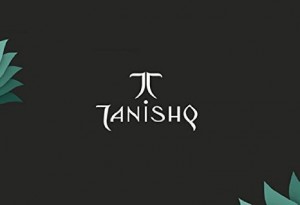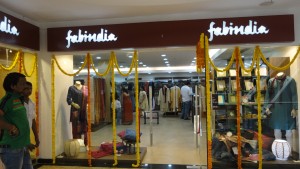In this blog post, Dr. Sreekanth Devalraju, Manager at R.R. Health Care Private Limited and currently pursuing a Diploma in Entrepreneurship Administration and Business Laws by NUJS, Kolkata, writes about the strategies and ideas that need to be implemented while starting a retail shop in India.
Retailer, Retailing, and Retail Business
Retailer is a French word that has prefix ‘Re’ and suffix ‘Tailer’ which means ‘cut again’ . The retailer is any person or a business that sells goods and services to the consumer directly, as opposed to the term wholesaler, who normally sells the goods and services to another business. Retailing, therefore, involves the sale of goods in small quantities to the end users or ultimate consumers of the goods and includes all such activities that are needed for the sale of goods or services to the final consumer irrespective of the person who sells them. In the retail business, even if a manufacturer directly sells his goods and services to end-users or final consumers, such marketing activity to that extent will be identified and named as a retail business and retailing. Retail outlets are the ancient and widely spread system of selling goods that are established globally.
Retail Business in India -The Present Scenario
Retail business in India is a little unorganized, and the business activities are not fine-tuned yet to reach the level of compliance with the set forth regulations. Although retail business segment contributes to being a major source of employment opportunities, the percentage of organized retail business in India is very low when compared to other nations. However, retail business in India is considered to be the most profitable segment that corresponds to be 470 billion US$, while the modern retailing with around 6% share and amounts to 26 billion US$. Retail business in India is estimated to reach at least 1.3 trillion US$ by 2018, with an estimation that the retail market in India will grow at an annual growth rate of 40% and reach 107 billion US$ in the years to come.
How to form a successful retail business
Forming a successful retail business is always a tricky aspect. One has to analyze meticulously and plan the resources needed for setting up of business and at the same time, it is also important for him/her to ensure that the business setup is in compliance with the regulatory aspects laid down in a country where the business is being carried out. First and foremost aspect is that the entrepreneur should have an in-depth understanding of the business area in which he is going to invest and intends to earn profits. His focus should be on running the said business for a long time. Hence he should have perfect vision and mission that helps him explore new ideas and strategies to resolve unexpected problems that are encountered by him in the due course of his journey. SWOT [Strengths-Weaknesses-Opportunities-Threats] analysis is the best way to analyze one’s stand and status on their strengths and weaknesses in a business area well before the entrepreneur begins his journey as a retailer. The SWOT analysis further focuses on the assessment of new opportunities in the business, required capital for investment and functioning of the new business, availability of financial resources and compliance on legal, social and political fields. It is also imperative that the aspirant conducts a good amount of background study or research on a particular idea of business, its marketing potential, targeted customers, etc., to come up with the most viable idea for a retail business.
Core Components for a Retail Business
In fact, one has to structure good and viable ideas for operating a successful retail business. Following are the core components of a retail business model that need to be addressed while structuring new ideas for business.
- Core strategy
- Strategic Resources
- Partnership Network
- Customer interface
1. Core Strategy:
Core strategy describes the basis of competency and relates to a business firm’s inherent capabilities to compete with its competitors. Three main elements of core strategy include:
- Business mission
- Product/market scope and
- Basis for differentiation
a. Business mission:
A firm’s business mission should focus on the very purpose of the firm’s existence and should provide a clear picture of the company’s strategies and actions to accomplish the set goals.
b. Product/ market scope:
A company’s product/market scope and markets on which it will concentrate should be defined well in advance since the products or services chosen for marketing has a high impact and plays a vital role in the success of firm’s business model.
c. Basis for differentiation:
The mindset of customers is always inclined towards new things, new products, and new services that are being marketed. It is important that the new business scheme or the new venture differentiates itself from its competitors in some way or the other that catches the eye of prospective customers. If a new firm’s products or services are not different from those of its competitors, customers will not opt for them. Firms often differentiate them by a cost, leadership strategy or a differentiation strategy.
2. Strategic Resources:
For any new business idea to get reduced to practice and ultimately to succeed depends mostly on the availability of resources. It is highly impossible to work out a strategy with a dearth of resources. Therefore, the success of a retail business model is substantially dependent on the resources the firm is holding. During initial stages, a firm’s resources may be limited to the competencies of founders, their plans to serve the market and the opportunities identified by them. Ideally, a firm’s strategic resources are their core competencies and strategic assets.
Core competency is a firm’s competitive advantage over its rivals. For example, if a bank’s core competency is to process a loan application within 24 hours, then the bank has a competitive edge of success over the other bank which does not provide such fast track loan approvals. On the other hand, strategic assets include tangible/intangible assets that are rare and valuable and owned by the firm. These assets may include plant, machinery, location, brands, patents, customer data, a highly qualified staff, and distinctive partnerships, etc.
3. Partnership Network:
Partnership network is another core component of a business firm and includes its suppliers and other partners. A supplier may be a company that provides required raw materials, parts or services to another company. For a retail business to go on smoothly, it is required that the firm maintains a cordial and collaborative relationship with its suppliers and it is also essential for the firm to encourage its suppliers by providing motivation to perform well. Apart from suppliers, firms should also partner with other key relations or other companies to ensure that their business model works. It is said that an entrepreneur’s ability to have a competitive edge over others depends on the extent of skills and cooperativeness extended by his partners to the firm.
4. Customer Interface:
The success of a retail business is dependent on the group of customers that the firm majorly targets. The way the firm chooses to interact with its clients decides the competitive edge it has over its rivals in the market. For example, Amazon.com markets books online through the internet while Barnes & Noble sells books through its traditional bookstores and online. There are two essential elements of a firm’s customer interface which include:
- Reaching target customers
- Fulfilment & support
a. Reaching its target customers:
For any retail business, a customer holds the key to success. Therefore it is imperative that the products/services marketed should be customer centred/ customer focused. This will, in turn, help the firm to achieve its goals in a retail business at a faster pace. A good business relation always starts with understanding and knowing the target customers in detail. More than just a customer service, it is needed to provide something in bonus and that would be the customer satisfaction. To be successful, the retail firm should “go the extra mile for the customer”, i.e., each time delivering just a little more than that the customers usually expect. Doing this, again and again, will make the business team interact with customers and help win their hearts and make them loyal over a period.
b. Fulfilment & Support:
It is always a point of concern that to what extent the product/service reaches the market or how it reaches the customer to his fulfilment and satisfaction. Firms should always focus on the way the product/service goes to the market since success in retail business is also dependent on the channels the company uses to provide support and service to the customers.
Formats of retail business
One of the key determinants of success in retailer business is the format that a firm adopts to present products and services to its customers. The format for retail business can be selected based on the kind of store design, products/services the firm wishes to provide and pricing approach that the firm follows. The key point is that the business format should be ideal to the target customers. Different kinds of retail formats that retailers adopt include mom-and-pop, Kirana stores, specialty stores, department stores, discount stores, convenience stores, hypermarkets, supermarkets, malls, category killers, e-tailers and vending machines.
Structuring ideas for a good retail business
Today, the Indian retail industry is in a dilemma given many challenges that threaten the true potential for growth of the retail business. Innovators are under continuous struggle to explore the best possible ideas to achieve potential growth in the Indian retail sector. Many new lessons were learned from the real experiences, and it was proved that a balanced approach to innovation could help retailers in India transform challenges into opportunities that provide successful, profitable and sustainable growth in the retail industry. Following are four key lessons that innovators provide, in bringing ahead the innovative perspective of Indian retail markets.
Lesson 1: A simple, well-executed idea can lead to successful innovation; large investments are not always necessary
Retail innovators proved that many simple and small ideas could work wonders and show greater impact as these simple and small ideas does not require a large investment, support from senior staff or excess of time to be expended. All that is needed is to adopt a balanced approach towards the innovation; that means while pursuing big ideas for business, development and implementation of small ideas need not be given up or sacrificed.
Case study: Tanishq Jewellery
Tanishq, a leading jewellery store was trying to explore an innovative concept that helps them to break into the fragmented jewellery market dominated by local jewellers. Tanishq identified few quality related and customer-related challenges that were posed by local jewellers. They include
1. Low prices:
Local jewellers always kept the prices very low to attract the customers but at the same time, the quality provided was very poor.
2. Long standing customer relationship:
Customers always preferred local jewellers over retailers due to their strong familial associations getting continued through years.
3. Unreliable quality checks:
An inexpensive and destructive technique was used to determine the purity of gold.
4. Personalized customer services:
Customized modifications were made at the customer’s convenience.
Tanishq Innovation:
Tanishq, therefore, introduced the “Karat Meter”, a simple innovation that helped to win the trust of consumers and credibility in the market.
Implications for Tanishq:
The implications for Tanishq from this innovative step are
- Ability to charge a premium: Transparent pricing and perception of higher quality enable premium pricing.
- Increased adoption among existing customers: Transitioned from being a place for one-off purchases to the jeweller of choice
- New Customer Acquisition: Developed a trusted brand, with customers willing to switch from local jewellers
Lesson 2: Successful innovations need not only be new and path breaking but can be an adopted model tailored to specific needs
Another important aspect is to explore several ways and means to develop innovations. But at the same time, the value of existing innovations should never be ignored. Enough care was taken by Indian retailers to address consumer/market needs, and they adopted several tested and practically validated innovations from global retailers and other successful industries. Retailers should not take a back step in adapting these innovations to their business.
Case study: GreenDust TM
GreenDust adopted an innovation in reverse logistics to offer high quality branded refurbished products at 25-30% lower cost. GreenDust offers high quality, genuine, branded products at highly discounted prices. Added to this, GreenDust also provides world-class warranty and after sales services.
GreenDust Innovation:
GreenDust sells refurbished products and factory seconds. These are the goods that are defective in the appearance of the product that includes scratches and smudges, hence fail to meet the rigorous inspection criteria, but this does not affect the functionality of the product. These include carton damaged and discontinued products also. The business model of the company is to take the rejected /defective /unsold /returned products from OEMs, refurbish them, provide a year’s warranty from their side, and sell them as factory seconds through their brand, Green Dust.
Implications for Green Dust:
- 25%-30% discount on products to consumers with warranty
- Achieved 50% sales from untapped Tier 2/3 cities
- Acquired 60% repeat customer base
- Green Dust grew @ 9 times in last 2 years to revenues of over 500 Crores
Lesson 3: Supply-side innovation can lead to as high a consumer impact as Demand-side innovations do:
Conventionally it is believed that demand-side innovations have maximum consumer impact and more than 70% of retailers feel that innovations should be focused on demand-side levers such as product, price and format. Surprisingly, there are also some challenges in the supply-side that directly impact consumers. For example, these challenges may arise from supply chain segment (Inefficiencies translate into product stock-outs, lower product variety, etc.) or from the working crew (Attrition and declining quality of store staff) both of which greatly impact consumer experience. It is a real task for retailers to transform these challenges into valuable deliverables to the consumers through innovations in supply-side. At the same time it is also required to focus on innovations, just not limited to demand-side but furthermore focused on the supply side to achieve a sustainable and competitive edge.
Case Study: fabindia
fabindia’s supplier co-ownership model, though focused on the back-end, helped generate mass appeal for rural, ethnic and handloom products. fabindia moved to a model where suppliers are given ownership in the company rather than Supply Region Companies (SRC)
fabindia’s innovation:
fabindia pursued the conflicting goals of profitability and social mission together. Its mission was to create sustainable employment for weavers and traditional handicraft artisans in rural India. William Bissell created a unique business model, Community Owned Companies (COC). It is the second big revolution in India after Amul. It empowered the suppliers, and enabled their growth, along with the growth of the company. Artisans Micro Finance Private Limited (AMFPL) venture fund was initiated, which is a fully owned subsidiary of fabindia. Through this fund, Supply Region Companies (SRC) were set up which is owned partly (49 percent) by fabindia through AMFPL, and also partly, (26 percent) by the rural artisans (These artisans are the main suppliers of fabindia).
Implications for fabindia:
- fabindia’s co-ownership model enabled self-sufficiency and financial independence of artisans.
- Nearly80,000 artisans as part of 17 SRC’s and this number is likely to grow to 100,000
- fabindia Limited increased its stake to 49% in SRC with suppliers holding at least 26%.
- Creation of
- Ethnic
Lesson 4: Innovations need to evolve and keep themselves relevant to continuously deliver value; it is not a ‘one-time’ effort
Several companies consider that innovation is a one-time opportunity, i.e., once implemented and found successful the focus of the company shifts to other priorities and the innovation loses its charm over a period and becomes stale. But to deliver sustainable impact, innovation should be a continuously evolving process on consumer and market needs, and if necessary the innovation needs to be evaluated and make alterations if required.
Case Study: Big Bazaar
Big Bazaar’s format innovation in late 90’s played a key role in transforming mass-consumer perception about modern retail. Consumers always used to think that the air conditioned stores are meant for selling goods at a high price and the charges they are paying are for the ambiance provided with fancy lights and English speaking sales personnel who are intimidating the customers.
Big Baazar’s innovation:
Smaller Aisles: Big Baazar created an atmosphere of a crowded marketplace enabling Indian consumers to feel at home.
Deals: Good deals and bundled goods were also provided to consumers.
Products in Bins: On par with local Kirana stores, loose products are kept in bins and sold on special schemes. This allowed consumers to touch wheat, rice, and other products and check for quality by themselves.
Granite Floors: Simple flooring allowed new consumers to be at ease and not be intimidated by large store format
Deals: Special schemes and bundled goods provided good deals to consumers – at par with Kiranas.
Evolution of various store formats: Continued to innovate its format and offered services to meet evolving consumer needs
Implications for Big Bazaar:
This flagship retail chain of the Future Group is on the verge of achieving a unique milestone in the history of world retail by being the first hypermarket format in the globe to rollout fastest 101 stores in a short span of seven years.
Conclusion
The Indian retail industry witnessed revolutionary changes during past few decades. Retailing in India has evolved across product variants and market segments over the time. Even smaller independent stores are upgrading regarding assortments, delivery, and ambiance. A great number of success stories are being recorded in the sectors of electronics, mobiles, computer accessories, jewellery, footwear, groceries, and textiles. This evolved change is riding on overall growth in income and consumption across the country, including the rural areas. The success of multiple format stores catering to different customer segments across geographies has proved the immense potential of Indian markets. Following various ways and means to adapt and adopt innovations, the tremendous expansion of retail stores to even smaller towns was possible thereby transforming overall scenario of retail markets in India. The invention of e-commerce further revolutionized the retail markets and created a new arena for the close conglomeration of suppliers and end-users for achieving huge profits. E-Commerce opened new avenues for retailers in India, and the online platform has evolved into a unique market by itself. Thus, opening a retail shop with right products, right pricing and promotional strategies along with sustainable and innovative perspective are always a very profitable proposition in India.


















